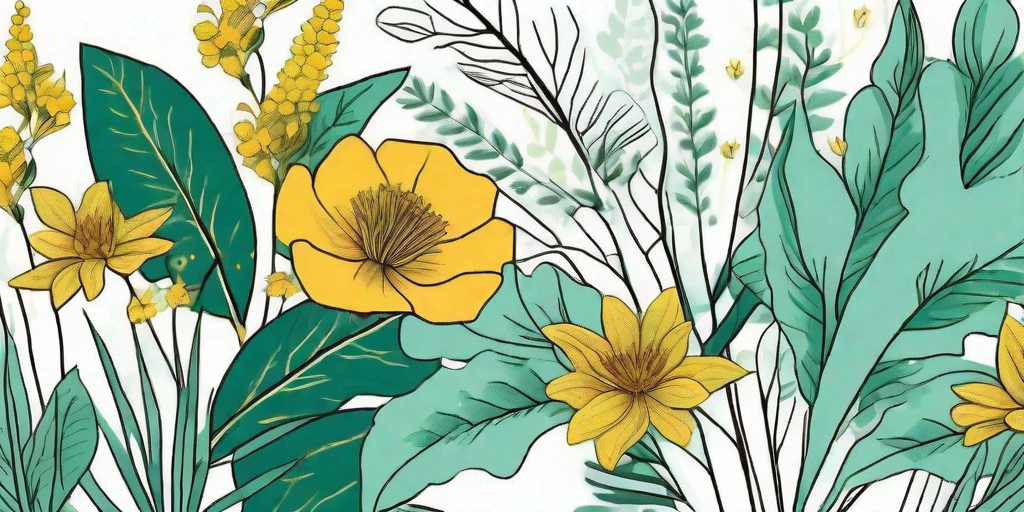
If you're a fan of the exotic, tantalizing flavors of curry, then you're in for a treat. The curry plant, scientifically known as Helichrysum italicum, is a delightful addition to any herb garden. It's not just a pretty face, it brings a unique aroma and flavor to your culinary adventures. Let's dive into the world of curry plants and find out how to grow, care for, and use this aromatic herb.
Getting to Know the Curry Plant
First things first, let's clear up a common misconception. The curry plant doesn't actually produce the curry spice we all know and love. That's a blend of several spices, including turmeric, cumin, coriander, and others. The curry plant, however, does have a strong, curry-like aroma, hence the name.
Native to the Mediterranean region, the curry plant is a perennial herb that thrives in sunny, well-drained soil. It's a hardy little fellow, resistant to drought, and can survive in poor soil conditions. Its silver-gray leaves and bright yellow flowers make it a visually appealing addition to your garden.
The Aroma and Flavor Profile
When you brush against the leaves of the curry plant, you'll be greeted with a strong, curry-like aroma. It's a unique scent that's sure to make your garden smell like a gourmet kitchen. As for the taste, it's a bit more subtle. The leaves have a slightly bitter, peppery flavor, making them a great addition to certain dishes.
However, be warned, the flavor is not for everyone. Some people find it too strong or unusual. But for those with adventurous taste buds, it's a culinary journey worth taking.
Planting and Caring for Your Curry Plant
Now that you're familiar with the curry plant, let's get down to the nitty-gritty: planting and caring for this unique herb. Fear not, green thumbs and gardening novices alike, the curry plant is relatively easy to grow and maintain.
Firstly, the curry plant prefers full sun exposure and well-drained soil. It's not a fan of wet feet, so avoid overwatering. It's also a good idea to add some gravel or sand to the soil to improve drainage.
Planting
When planting your curry plant, make sure to space them about 18 to 24 inches apart. They like their personal space. You can start them from seeds or buy young plants from a nursery. If you're starting from seeds, sow them in late winter or early spring.
Once planted, water them thoroughly and then let the soil dry out before watering again. Remember, they're drought-resistant, so they don't need constant watering.
Pruning and Fertilizing
Pruning is essential for maintaining the shape and health of your curry plant. Prune them in early spring, removing dead or damaged branches. This also encourages new growth.
As for fertilizing, the curry plant doesn't need much. A light application of a balanced fertilizer in the spring should do the trick.
Culinary Uses of the Curry Plant
Now, onto the fun part: cooking with the curry plant. While it doesn't taste exactly like curry spice, it does add a unique flavor to dishes. Here are a few ways you can use this aromatic herb in your kitchen.
Firstly, the leaves can be used fresh or dried. Fresh leaves can be added to salads, soups, and stews. Dried leaves can be used as a seasoning, similar to how you'd use dried herbs like rosemary or thyme.
Recipes to Try
Ready to experiment with the curry plant in your kitchen? Here are a few recipes to get you started:
- Curry Plant Infused Olive Oil: Infuse some olive oil with a handful of curry plant leaves. This aromatic oil can be used for cooking or as a salad dressing.
- Curry Plant and Tomato Soup: Add some fresh curry plant leaves to your favorite tomato soup recipe for a unique twist.
- Curry Plant Roasted Chicken: Rub some dried curry plant leaves on a chicken before roasting for a flavorful, aromatic main dish.
Frequently Asked Questions
Is the curry plant the same as curry leaves?
No, they are not the same. Curry leaves come from the curry tree, which is native to India. The curry plant is a different species altogether, native to the Mediterranean region.
Can I grow a curry plant indoors?
Yes, you can. However, it needs plenty of sunlight, so place it near a south-facing window. Also, make sure the pot has good drainage to prevent waterlogging.
Is the curry plant edible?
Yes, the leaves of the curry plant are edible. They have a slightly bitter, peppery flavor and can be used fresh or dried in cooking.
So, there you have it, folks. The curry plant: a flavorful, aromatic addition to your garden and your kitchen. Happy gardening and bon appétit!















